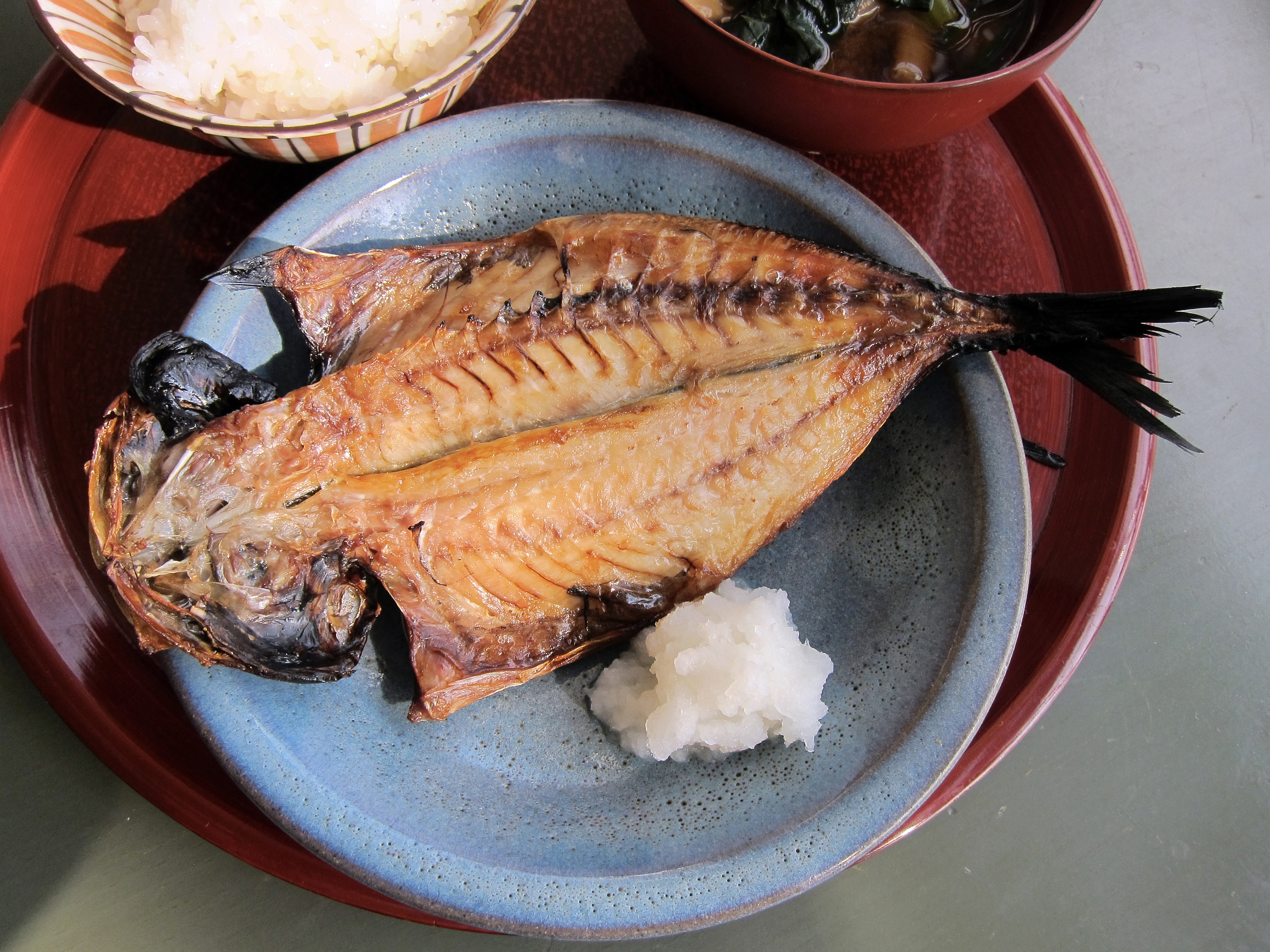Japan is famous as a nation that loves raw seafood. But dried fish has a much longer history here and has played an important role in Japanese society for hundreds of years. There are basically two kinds of dried fish products in Japan. The first, which goes by various names, is dried (sometimes after fermenting) for a long period until it's rock-hard and keeps very well, such as katsuobushi, fermented and dried skipjack tuna or bonito that is shaved like wood and used in dashi stock. The other type is usually called himono (roughly translates as "dried things"), which is typically grilled and eaten as-is.
Dried fish exists in most seafaring societies in one form or another, and Japan is no exception. In the days before refrigeration and canning, salting and drying were the only reliable methods for preserving a catch, so when fish was sent to the imperial court, it was usually dried. There are records of dried salmon, trout and sea bass being sent to the emperor during the Nara Period (710-794), and himono was an important part of the diet at the Imperial court in Kyoto during the Heian Period (794-1185). Himono was considered a luxury food until the Edo Period (1603-1868), except for people who lived along the coast. Fish dried in this style, from regions around the country, flooded into Edo (modern-day Tokyo) and other population centers and were embraced enthusiastically by citizens. Locally produced mezashi (dried sardines skewered together in a neat row), made with fish that were caught in Edo harbor, was inexpensive and tasty. Mezashi is still eaten as part of a traditional Japanese breakfast.
At the Ise Jingu grand shrine in Mie Prefecture, himono is used as an offering to Amaterasu Omikami (the Sun Goddess), the main Shinto deity to whom the shrine is dedicated to. Since it was considered important to only offer the goddess the best and tastiest himono, a himono making industry sprang up in the area, which is still thriving. Himono is considered a must-have souvenir from the shrine.



